- Home
- Jeremy Robinson
Helios (Cerberus Group Book 2) Page 21
Helios (Cerberus Group Book 2) Read online
Page 21
Not if I turn it into a weapon first, Fallon thought.
And why not? If he controlled the Black Knight, he would own the sun.
He managed a smile of resignation and let the matter drop. Maybe they were done with him, but he wasn’t done with them.
THIRTY-FOUR
Mount Nebo, Jordan
“I can’t believe they called this ‘the Promised Land.’” Fiona waved a hand at the panoramic vista spread out before them. From the 2,800-foot-tall ridge overlooking the Jordan River Valley, she could see all the way to Jerusalem, but although there were a few patches of green here and there, and a sparkling blue gem that was the Dead Sea, the landscape was, for the most part, desolate desert.
“It looked very different three thousand years ago,” Gallo said. “Remember, this is one of the oldest continuously inhabited regions on Earth.”
“Inhabited and contested,” Pierce added. “People have been fighting over this real estate through all of recorded history.”
“Yeah, it’s got kind of a lived-in look,” Fiona agreed. She dropped her gaze to the large metal plaque that showed the direction and distance of several important locations, some of which Fiona recognized—Jerusalem and Bethlehem—and some which sounded familiar. “Qumran?”
“The location where the Dead Sea Scrolls were found,” Pierce said.
“Oh.” Fiona turned away from the scenic view. Off to her left stood the reconstructed Byzantine church, called the Basilica of Moses, the ruins of which had been discovered in the 1930s. The structure reminded her of the St. Catherine’s Monastery, and that made her think about Father Justin, which in turn made her feel like crying. So she turned away from it as well, looking instead to the parking area, which was crowded full of cars and buses. Tourists were snapping selfies with the Holy Land in the background.
Pilgrimage, twenty-first century style.
While the world was still trying to restore some semblance of order following the unprecedented global earthquakes, tourism in the Holy Lands was continuing apace. Instead of canceling their plans and heading home, visitors to the region seemed energized by the possibility that the long-anticipated End Times were about to reach their climax. One such vacationer had explained to Fiona how the Book of Revelation foretold a great earthquake and a time of darkness upon the Earth, just before the End.
Fiona found the prophecy more than a little disquieting. It was probably just a coincidence, but what if it wasn’t? She had tapped into some kind of universal knowledge under Arkaim. Maybe all those prophets in the Bible had tuned into the same thing? Maybe whatever was about to happen with the Black Knight was so profound that it sent ripples back through time? Or maybe someone—God, or the Originators, or whoever—had known what might happen, and sent those visions and prophecies as a warning?
Thinking about it made her head hurt, especially since she was already feeling tired and a little cranky after traveling too many miles and getting too little sleep. Twenty-four hours earlier she had been in Russia, preparing for an excursion into the tunnel labyrinth beneath Arkaim. Twelve hours prior—give or take—she had been huddled with Pierce and Gallo in a cave on the side of a mountain in Egypt. Now, she was about to go searching for another cave on another mountain, this time in Jordan.
To the north, opposite the church, stood a tall, creepy-looking cross-shaped sculpture. “What’s that?”
“It’s a reimagining of the Nehushtan,” Gallo told her. “The Brazen Serpent that God had instructed Moses to set up to heal anyone bitten by one of the fiery serpents that God had sent to punish them.”
“So God sent the serpents, then told them how to be saved from the serpents.”
“Christians believe the incident was meant to prefigure looking to crucified Christ for salvation. You’ll notice the cross-shaped design of that piece. It’s a modern piece, of course. Not the actual Serpent Moses made.”
“What happened to the real one?” Fiona asked.
“According to the Bible, it was destroyed a few centuries later. The people had started worshipping it, so King Hezekiah had it destroyed.”
“Is that the spot where Moses put it?”
Pierce jumped in. “Remember, the Israelites were a nomadic people, so there was no fixed location for it. This mountain has special significance though, because it’s the place where Moses died. God wouldn’t permit him to enter the Promised Land, but he did get to see it from here. So this place is a symbolic boundary between the Holy Land and the wilderness, divine grace and exile. That’s what makes this the most logical spot for the Ark to be hidden.”
Pierce had clearly put some thought into the matter.
Fiona nodded at the sculpture. “It kind of reminds me of a Caduceus. The symbol for medicine.”
“Technically, the symbol of medicine is the Rod of Asclepius, the Greek god of healing. A staff with one snake. The Caduceus has two snakes and is the symbol of Hermes, the messenger of the gods. The two are commonly confused, but it is interesting how the archetype of the serpent as both a healing figure and a symbol of wisdom is mirrored across different belief systems.” Pierce nodded at the sculpture. “That definitely has elements of both.
“You’ll appreciate this, Fi. Hermes, or Mercury, was also considered the embodiment of wisdom. In Egyptian mythology, he was equated with Thoth, and the Babylonians called him Nabu.”
“Nabu… Nebo?”
Pierce nodded. “And the Egyptian word for ‘gold’ is Nebu. Gold was a sacred metal to the Egyptians, associated with the glory of the sun god. The name for Hathor literally translated as ‘golden goddess.’”
“Hathor, the sun cow lady?”
The trilling of Pierce’s satellite-enabled smartphone interrupted him, just as the conversation was getting interesting. He grinned when he saw the name on the caller ID. “Tell me you’ve got good news, Cintia.”
He listened for a moment, then gestured for Fiona and Gallo to join him in their rented car. Once they were all ensconced within, he set the phone face-up on the center console. “Okay, say that again.”
Dourado sounded like she was stuck in fast forward. It wasn’t too hard to imagine her ensconced in her computer room, mainlining Monster energy drinks. “Are you all sitting down? I hope you’re sitting down because… Mind. Blown.”
“Let’s have it,” Pierce said, sounding far more upbeat than he had any right to.
“Okay, I’m sure you already know most of this, Dr. Pierce, but I’ll start from the beginning. This is from the second book of Maccabees, chapter two. ‘The prophet, in virtue of an oracle, ordered that the tent and the ark should accompany him. He went to the very mountain that Moses climbed to behold God’s inheritance. When Jeremiah arrived there, he found a chamber in a cave in which he put the tent, the Ark, and the altar of incense; then he sealed the entrance. Some of those who followed him came up intending to mark the path, but they could not find it. When Jeremiah heard of this, he reproved them: ‘The place is to remain unknown until God gathers his people together again and shows them mercy. Then the Lord will disclose these things, and the glory of the Lord and the cloud will be seen, just as they appeared in the time of Moses and of Solomon when he prayed that the place might be greatly sanctified. It is also related how Solomon in his wisdom offered a sacrifice for the dedication and the completion of the temple.”’
“The mention of Solomon is significant,” Pierce said, as an aside to Fiona. “Solomon built the Temple as a permanent place to house the Ark, and as a reward, he was blessed with divine wisdom.”
“Wisdom,” Fiona said. “And Nabu, a.k.a. Nebo, is the Babylonian god of wisdom.”
“More proof that we’re in the right place,” Pierce said. “But we need to narrow it down.”
“I’m getting to that,” Dourado said, the words almost running together like the buzz of a bee’s wings. “The chapter begins by referencing another document. This whole account is a synopsis of that other document, but it doesn’t specify the actual sour
ce. However, there is a similar account in The Apocalypse of Baruch the Son of Neriah, so that’s probably what they were talking about.
“Baruch has a vision in which he sees an angel go into the Holy of Holies to gather up the Ark and all the treasures of the Tabernacle, after he commands the Earth to hide the treasures, so that strangers—the Babylonians—would not be able to take them. After the vision, Baruch is sent to find Jeremiah. He tells him everything he saw and then they spend seven days together fasting.”
“Baruch was giving Jeremiah his marching orders,” Pierce said.
“He doesn’t explicitly say where Jeremiah was to hide the Ark, but he does say this later on: ‘You priests take you the keys of the sanctuary, and cast them into the height of heaven, and give them to the Lord.’”
“How does that help?” Fiona asked.
“The keys were symbolic of the authority to enter the Temple,” Pierce explained. “There weren’t actual locks on the doors. Casting them into the heavens would be sort of like giving the keys to your apartment back to the landlord when you move out. And remember, Jeremiah was a Kohen. He had God’s permission to enter the Temple.”
“There’s more to it,” Dourado said. “He was being given direction and distance to the place where the Ark was supposed to be hidden.”
“I don’t understand,” Fiona said.
“I’m not sure I do either,” Pierce admitted. “Explain.”
“This is from later in the chapter: ‘And do thou, O sun withhold the light of your rays. And do thou, O moon, extinguish the multitude of your light. For why should light rise again. Where the light of Zion is darkened?’”
“That sounds like a solar event,” Fiona said.
“I know, right?” Dourado agreed. “But it also signifies direction. Sunrise. Due east. Mount Nebo is due east of Jerusalem. This is backed up in the Book of Ezekiel. Chapter eleven makes repeated references to the east gate of the city, and the glory of God—”
“Shekinah,” Gallo murmured.
“—leaving the city and going to stand on a mountain to the east of the city. And what mountain is east of Jerusalem?
“The placement of the Temple in Jerusalem was not random. Everything had symbolic importance. So when Jeremiah throws the keys from the door of the sanctuary, it’s symbolizing that he should travel due east, toward the spot where the sun would appear to rise over Mount Nebo on the day of the vernal equinox, a heading of ninety degrees, adjusting for changes due to precession.”
“Interesting,” Pierce said. “You said direction and distance?”
“Everything about the Temple was precisely measured, and those measurements reflect a very precise mathematical code. The same would be true of the place where the Ark was to be stored until the return. When he talks about throwing the keys to the ‘heights of the heavens,’ it’s not just a metaphor. It indicates a specific measurement, based on the height of the Temple itself. Forty cubits.”
“Forty cubits,” Pierce repeated. “Why does that sound familiar?”
“That same number appears in the Copper Scroll found with the Dead Sea scrolls. In part, it reads: ‘In the ruin that is in the valley of Acor, under the steps, with the entrance at the East, a distance of forty cubits, a strongbox of silver and its vessels with a weight of seventeen talents.’”
“Where’s Acor?” Fiona asked.
Pierce pointed to the west. “It’s supposed to be that way, near the site of Jericho, but nobody’s sure. No one has ever found a treasure matching that description.”
“A Greek talent was believed to be roughly a hundred pounds,” Gallo added. “So seventeen talents would indicate a considerable amount of precious metal, far too much for a single strongbox, I would think. The mention of vessels could refer to the sacred vessels of the Temple.”
“It might not have anything to do with the Ark,” Pierce said, “but the reference to forty cubits is interesting.”
“A cubit was about eighteen inches,” Gallo supplied. “The distance from the elbow to the tip of the middle finger.”
“Actually, it was a variable measurement,” Pierce said. “Anywhere from sixteen to twenty-five inches depending on who you ask.”
“Exactly,” Dourado said. “But the cubit used for measuring the Temple—the Sacred cubit—was 25.20 inches. The same unit of measurement was used for building the Great Pyramid, which is why they are sometimes called Pyramid cubits. That number, 25.20 is important. It’s one percent of 2,520, which is the product of 7 and 360.”
“Seven is the number of God and there are 360 days in the lunar calendar,” Gallo said, as if speaking to herself.
“And 360 degrees in a circle. It’s a recurring numerical value in the Old Testament.”
Pierce shook his head. “It’s a coincidence. Numerologists are always finding patterns that aren’t there. Our system of measurement is an arbitrary value established just a few hundred years ago.”
“That’s not completely true, George,” Gallo countered. “Yes, statute measurements were established by Queen Elizabeth, but they were based on earlier systems of measurement.”
“But still arbitrary.”
“Not necessarily. In the year 240 BC, the Greek astronomer Eratosthenes calculated the circumference of the Earth by comparing the difference in the length of the shadows cast in two different cities at exactly the same time. He calculated the circumference of the Earth to within 1%. He was able to make that calculation because he knew that a circle could be evenly divided into 360 degrees, each degree measuring 700 stadia.”
“That’s 252,000,” Fiona said. “There’s that number again.”
Gallo nodded. “The error in measurement was due only to the fact that the Earth isn’t a perfect sphere, something he couldn’t have known. His method was valid and based on known universal constants. Christopher Columbus used his calculations to plot his circumnavigation, and the only reason he stumbled across America is because he didn’t know which version of the stadia Eratosthenes had used. Like I told you earlier, the ancients were much more sophisticated than we give them credit for. The statute measurement system was based on an older system, so it’s not unreasonable to think that the statute inch was derived from the Sacred cubit, instead of the other way around.”
“That’s right,” Dourado added. “And the statute measurement system was devised in part by Dr. John Dee, who was a devoted scholar of Jewish mysticism. It’s pretty mind-boggling. And I would have been tempted to dismiss it all as rubbish except for one thing, or actually, one man. The guy who figured out this stuff, including the actual length of the Sacred cubit, was none other than Sir Isaac Newton.
“All the discoveries he made—gravity, thermodynamics, the properties of light, calculus—it all came out of his search to unlock the mysteries of the universe. He was convinced that the answer was contained in sacred writings, and in particular, measurements. Two-thirds of Newton’s research, most of which is still unpublished, was devoted to theological mysteries, not scientific, though I’m sure to him it was all part of the same puzzle.
“Newton kept finding a numerical pattern in the dimensions of the Temple and the precise locations of sacred spots. Patterns that were reflected in the universe. In the movement of orbiting bodies and the behavior of light.”
“Okay,” Pierce said. “We’ll assume that Newton knew what he was talking about. You said the height of the Temple was forty Sacred cubits.”
“Eighty-four feet. If you head due east, as reckoned by sunrise on the vernal equinox viewed from the Temple Mount, and adjusting for the changes due to precession, the azimuth crosses the highest point on the ridge at a distance of 168,000 feet—80,000 Sacred cubits or 2,000 times the height of the Temple. That location is about three miles east of where you are, but definitely not on Mount Nebo.
“The exact number 80,000 appears in the Bible three times, all in reference to the building of the Temple of Solomon. ‘Solomon counted out seventy thousand men to bear burdens, an
d eighty thousand men who were stone cutters in the mountains, and three thousand and six hundred to oversee them.’ Did you catch the magic number in there? Seventy thousand and three thousand six hundred...multiply them together and you get 252,000,000 or 2520 times 100,000. If you travel 70,000 cubits from the Temple Mount, 1,750 times the height of the Temple, you hit a spot downslope, about a mile west of where you are.”
Gallo nodded. “So 80,000 cubits is the measurement to the mountain, symbolized by the stone cutters, and 70,000 cubits—represented by the men carrying burdens—is the distance Jeremiah carried the Ark!”
“I’m sending you the coordinates,” Dourado said.
“Is there a cave at that spot?” Pierce asked.
“There doesn’t appear to be one on the satellite photos, but remember, the entrance was closed and hidden so well that the people with Jeremiah couldn’t find it.”
“A hidden entrance that only certain people can find and open,” Gallo murmured, glancing at Fiona. “Where have we heard that before?”
Pierce nodded, but there was an eager gleam in his eyes. “Jeremiah was a Kohen and a Baal’Shem, a Master of the Word.”
“The Mother Tongue,” Fiona said.
“It might just be one particular word. In occult traditions, the Temple Key Cintia mentioned earlier refers to the true pronunciation of God’s name, which possessed extraordinary power and was lost during the Babylonian exile. It was such a powerful word, or so tradition states, that it was forbidden to speak it. That’s why we don’t know what the actual name of God is today.”
“I thought it was Jehovah, or Yahweh. Something like that.”
“Those are approximations,” Gallo said. “In the Book of Exodus, when Moses asks God his name, God answers: ‘I Am that I Am.’ The word ‘I Am’ written in Hebrew corresponds to YHWH—the tetragrammaton—but that’s just the consonants. Written Hebrew doesn’t include the vowels in between, so the pronunciation ‘Yahweh’ is just a guess. Jehovah is a Latinized version of it, the same way Jesus is Latinized from Yeshua.”

 Alter
Alter From Above - A Novella
From Above - A Novella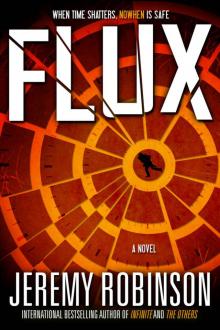 Flux
Flux Tether
Tether Exo-Hunter
Exo-Hunter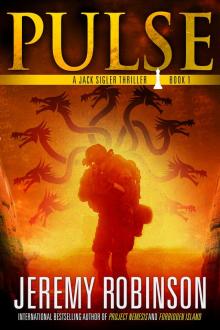 Pulse
Pulse Cannibal
Cannibal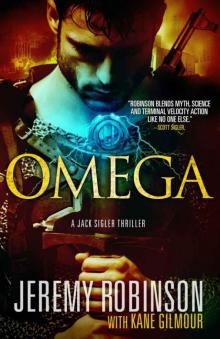 Omega: A Jack Sigler Thriller cta-5
Omega: A Jack Sigler Thriller cta-5 Flood Rising (A Jenna Flood Thriller)
Flood Rising (A Jenna Flood Thriller) Viking Tomorrow
Viking Tomorrow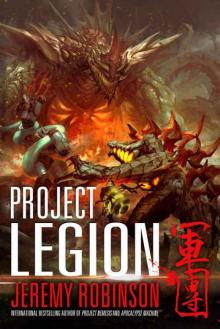 Project Legion (Nemesis Saga Book 5)
Project Legion (Nemesis Saga Book 5) BENEATH - A Novel
BENEATH - A Novel Kronos
Kronos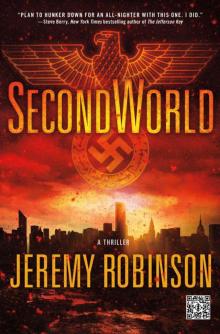 SecondWorld
SecondWorld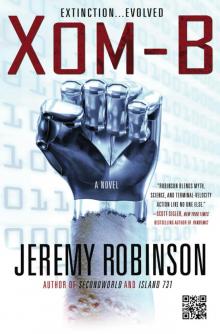 XOM-B
XOM-B Forbidden Island
Forbidden Island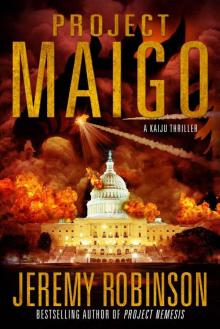 Project Maigo
Project Maigo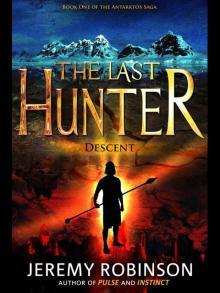 The Last Hunter - Descent (Book 1 of the Antarktos Saga)
The Last Hunter - Descent (Book 1 of the Antarktos Saga)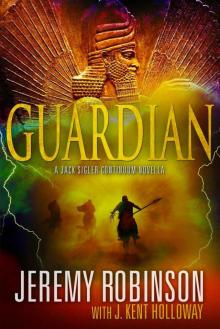 Jack Sigler Continuum 1: Guardian
Jack Sigler Continuum 1: Guardian Infinite
Infinite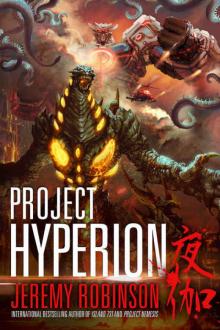 Project Hyperion
Project Hyperion The Distance
The Distance The Divide
The Divide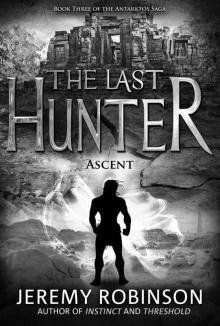 The Last Hunter - Ascent (Book 3 of the Antarktos Saga)
The Last Hunter - Ascent (Book 3 of the Antarktos Saga)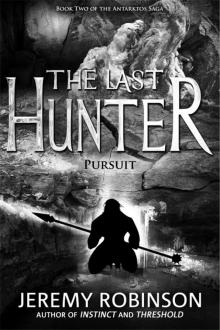 The Last Hunter - Pursuit (Book 2 of the Antarktos Saga)
The Last Hunter - Pursuit (Book 2 of the Antarktos Saga)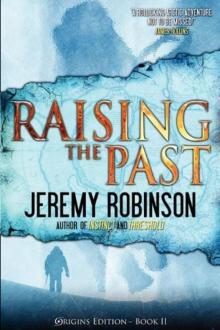 Raising the Past
Raising the Past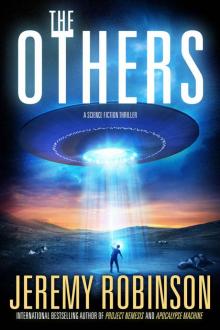 The Others
The Others The Last Hunter - Collected Edition
The Last Hunter - Collected Edition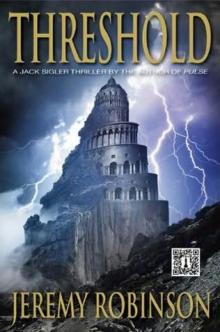 Threshold
Threshold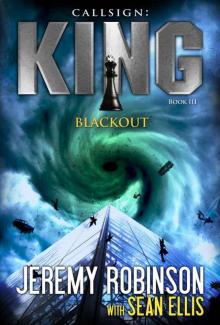 Blackout ck-3
Blackout ck-3 Antarktos Rising
Antarktos Rising Viking Tomorrow (The Berserker Saga Book 1)
Viking Tomorrow (The Berserker Saga Book 1) The Didymus Contingency
The Didymus Contingency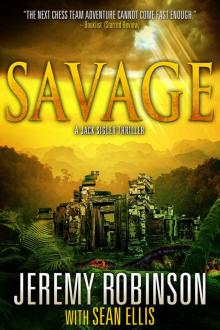 Savage (Jack Sigler / Chess Team)
Savage (Jack Sigler / Chess Team)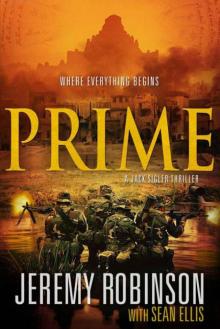 Prime
Prime Insomnia and Seven More Short Stories
Insomnia and Seven More Short Stories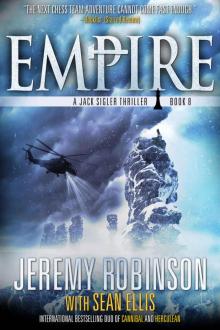 Empire (A Jack Sigler Thriller Book 8)
Empire (A Jack Sigler Thriller Book 8) Unity
Unity Instinct
Instinct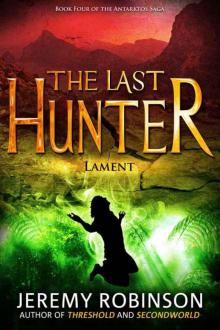 The Last Hunter - Lament (Book 4 of the Antarktos Saga)
The Last Hunter - Lament (Book 4 of the Antarktos Saga) MirrorWorld
MirrorWorld Herculean (Cerberus Group Book 1)
Herculean (Cerberus Group Book 1)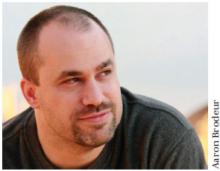 Island 731
Island 731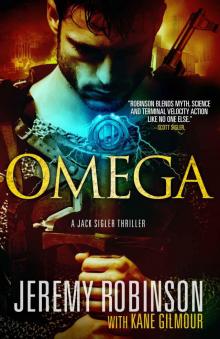 Omega: A Jack Sigler Thriller
Omega: A Jack Sigler Thriller Patriot (A Jack Sigler Continuum Novella)
Patriot (A Jack Sigler Continuum Novella)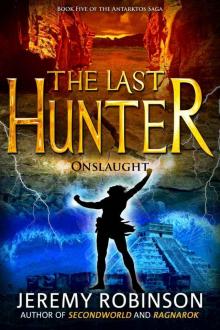 5 Onslaught
5 Onslaught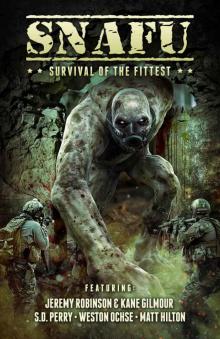 SNAFU: Survival of the Fittest
SNAFU: Survival of the Fittest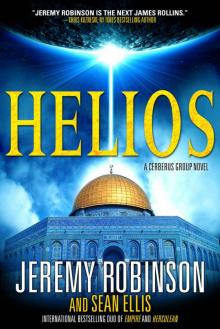 Helios (Cerberus Group Book 2)
Helios (Cerberus Group Book 2)